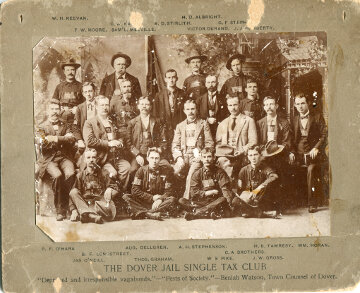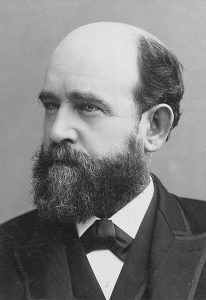Georgism, Geoism, or Single Tax Theory
Life in America in the latter half of the nineteenth century can be summarized in one word: change.
The country experienced a period of astounding economic growth stemming from rapid industrialization. With that growth came enormous sums of money as well as the formation of colossal corporations and institutions. Finance became increasingly centralized in large banks. Pulled by the opportunities presented by industry, the American population became increasingly urbanized. Even though the country was experiencing unprecedented economic growth, the new wealth remained at the top with industry leaders, creating a substantial disparity between them and the urban working classes. Paired with the declining conditions of American cities, the economic inequity and deplorable working conditions led to growing tensions and conflicts in this period.
During this period of great social and economic change, there was no shortage of progressive thinkers determined to devise a solution to the problems caused by industrialization, though few were as popular as Henry George (1839-1897).
According to the Philadelphia native, the crux of the problem was private land ownership. The demand created by increasing populations and the need for natural resources caused land value to rise dramatically, shifting wealth towards the elite. His economic remedy was laid out in his 1879 book, Progress and Poverty. George declared that all government revenue should come from a single tax on the full rental value of land and only land, regardless of any improvements or buildings. Under this system, land would be held in common by the members of a community and any increases in land value would benefit all. George believed that the revenues collected by this single tax would be enough to fund public services and goods like roads. Excess revenue would be reinvested in the community. The overall effect of this system would be to distribute wealth more justly based on the output of a person’s labor and not on their ability to hold land and natural resources.
The book was a hit. Progress and Poverty sold nearly five million copies by George’s death in 1897. As his ideas spread, many Georgist or Single Tax associations were established across the United States to campaign for the adoption of his economic system. Philadelphia in particular had an ardent group of followers and in 1895, these Georgists planned an invasion of Delaware.
Before the Federal Government could be convinced of the virtues of the Single Tax system, the Georgists first had to prove that would work on a state level.
Due to its small size, Delaware was chosen for this experiment. In 1896, the Single Tax Party formed to gain control of the state government. The campaigners did not receive a warm welcome from Delawareans; some members were jailed and the party ticket only drew a mere 3% of the vote. Undeterred, Philadelphia Single Taxers set their sights smaller. Plans for a single tax colony began to take shape and by 1900 land was purchased in northern Delaware.

The Dover Jail Single Tax Club, ca. 1896 Back row: W.H. Keevan, C.W. Kane, Haines D. Albright, Frank Stephens Third row: F.W. Moore, Samuel Melville, A.D. Stirlith, Victor Durand, J.J. Haggerty Second row: P.F. O’Hara, B.F. Longstreet, Aug. Dellgren, A.H. Stephenson, C.A. Brothers, H.B. Tawresy, William Horan Front row: James O’Neill, Thomas Graham, W.S. Pike, J.W. Gross

